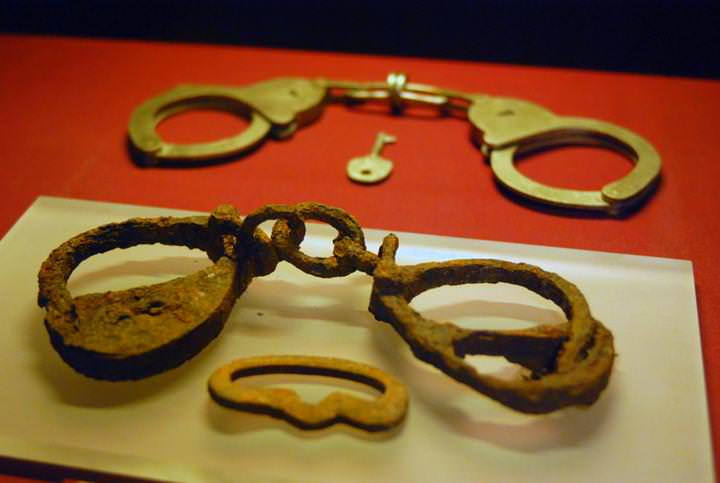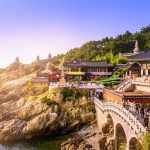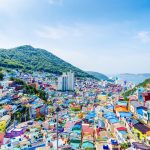Exploring the Weird Side of Korea: 5 Awesome Off-Beat Places Around Seoul
2019 brings plenty of fresh opportunities to see the world – and naturally, traveling will be part of my life for a long time to come. Looking forward also means looking back at some of the awesome places Focus Asia Travel would encourage you to check out 5 awesome off-beat places around Seoul.
Baedari Brewery
Baedari Brewery has been brewing makgeolli (rice wine), jukyoju (a clearer and more potent rice wine) and soju (Korean fire-water) since 1915. In 1974, Goyang makgeolli was sent to Pyeongyang for the first inter-Korean summit. This museum, dedicated to the brewery’s history, was founded in 2004, and today the fifth generation continues the legacy.
Start by entering the main building and appreciating the first few simple exhibits – the majority of the collection is upstairs on the second floor. A dim light seems appropriate for the dated items that once assisted in the manufacturing of fermented rice wine (known as makgeolli) and soju.
The technology these days is much better of course, but looking at over 90 years of history has its merits as well. They have the wear and tear expected of items used in an industrial setting on a daily basis. Some are simply displays, while other exhibits are models describing the different processes of making rice wine.

Baedari-Brewery
Once you’re finished with the museum, get some lunch and try some makgeolli! There’s Korean food (including kimchi jeon, kimchi pancakes), and locally-brewed makgeolli downstairs. While the typical makgeolli is fine, give the cactus makgeolli a try. It’s a little pinker and sweeter.
Address: Gyeonggi-do, Goyang-si, Deokyang-gu, Seongsa-dong, 470-1
Directions: From Seoul’s subway system, Wondang station, line 3, exit 6. Cross the street and walk about 500 meters. The brown road signs are in English and are fairly easy to spot.
Ice Gallery
It’s not the most well-known area; however it’s a lot of fun. The Ice Gallery claims to be the world’s first indoor ice sculpture gallery that is open all year-round, and offers plenty of ice sculptures in the biggest walk-in freezer around.
After arriving, select a borrowed winter coat to keep you warm (it is -5℃ in there), and head in. Give it 20-30 minutes of walking around and taking pictures – there’s plenty of Korea icons around, including Sungryemun (AKA Namdaemun), Bukchon Hanok Village, Dabotap (a stone pagoda), along with an ice slide. Yes, an ice slide. You have to try it out before returning to room temperature, and that goes for the adults too!

Ice-Gallery
If you’re up for some more ice, take the opportunity to make your own ice sculpture. The staff will guide you to a wooden table and show you how to carve an ice cup. It’s definitely not as easy as it looks – once you’ve finished, however, take a sip out of it and enjoy your hard work.
Address: Seoul-si Jongno-gu Hwa-dong 138-7 B1
Directions: Anguk station, line 3, exit 1. Walk 100 meters, then turn right. This will be a long, straight road with a few cafes along the way. Walk 400 meters to a T, then turn right. You’ll see the Ice Gallery on the right.
Moniker Museum of Chicken Art
The chicken returns! What was once the Seoul Chicken Art Museum in the central neighborhood of Hahoe-dong is now the Maniker Museum of Chicken Art in northern Gyeonggi-do. The story and reasons why they moved is unclear, and probably has to do more with financial realities than any lack of art about fowls. In any case, the museum opened in its new location in January 2012. While it’s some distance from Seoul, it is still quite easy to reach.
Even before the invention of frying oil, chickens and Korea got along very well. To ancient Koreans they were symbols of fertility, wealth, and a successful career, not to mention very tasty. Even after a person’s death, they would not escape from their feathered friend – a kkok-du, or wooden sculpture of a chicken would decorate their sang-yeo, or a wood container used to carry a corpse. These wooden sculptures come from the later Joseon Dynasty, during the 19th and 20th centuries.
But why a chicken?, you might be asking. Of the 12 animals in the Chinese zodiac, only the chicken has feathers to serve as a messenger between this world and the next.
Plenty of chicken art exhibits hail from other countries, including China, Japan, Germany, New Zealand, Russia, Spain, and the USA. What’s remarkable is that there’s nothing particularly tacky – between the ceramics and souvenir coins there’s a lot of variety.
If you’ve ever wondered what awaits you at the end of the country’s longest subway line, you’ll know soon enough. It’s a fairly small site, and shouldn’t take you more than a half hour to thoroughly enjoy. Get some chicken (from the same company that owns a chicken production facility nearby, of course) or coffee at the cafe if you like. Expect to have the run of the place during the weekdays.
Address: Gyeonggi-do Dongducheon-si Ha-bong-am-dong 141-4
Directions: Soyosan station, line 1 go out the only exit, cross the road, and wait for bus 39 or 53-1. Either way, you’ll get off at the Manikeo bus stop (Ma-ni-keo) after 5 or 6 bus stops (about a 15-minute ride). Double-back about 100 meters and cross the road.
Seodaemun Prison Museum (high-tech kid-friendly torture displays)
Seodaemun Prison History Hall commemorates and remembers the Korean activists who fought the Japanese colonization in the early 20th century. While gruesome in some places and simply odd in others, the hall tells the story in a way that attempts to communicate the pain and horror of it all. It succeeds on some levels, but misses a part of the story the Korean government would rather not tell.
Opened by the Japanese in October of 1908, Gyeongseong Gamok held the activists arrested during the Japanese occupation. The museum is quick to document the thousands of people detained, tortured, or executed under the Japanese rule. It’s completely missing the section of history after World War II, when Korean dictators used the area to hold democracy activists until democracy was introduced in 1987.
The more recent history isn’t covered up, but it sure as hell isn’t made well-known either. One official description glosses over the more recent history in favor of keeping track of when names and locations changes.

Seodaemun-museum
In any case, the focus on Japanese atrocities is well-placed, however. Replete with artifacts or reproductions from the era, one entire room is filled with the cards of Korean prisoners. A nearby room catalogs the prisoners with a fancy touch-screen device – Korean tax money hard at work. Perhaps the most bizarre area is farther on. A webcam takes your picture, and then superimposes it over a projected movie ‘torturing’ you. Keep going, and experience the ‘spiked box’ torture or the ‘tiny room’ torture.
As you’re walking in you’ll note an excellent Independence Gate and a number of other sites around the area. If visiting from November to February, save these for later, since the museum closes a bit earlier.
NOTE: photographs allowed but videography is prohibited, and probably not for the under-10 crowd.
Address: Seoul-si Seodaemun-gu Hyeonjeo-dong 101
Directions: Dongnimmun station, line 3, exit 5. The Independence Gate is readily visible from the subway.
Suwon Toilet Museum – toilets and the life of Sim Jae Duck
This has got to be the biggest case of turning a disadvantage into a life’s goal, that Korea has to offer. Born in the outdoor toilet of his mother’s house, he grew up with the nickname Gettongi (literally, dog poop). Sim Jae Duck eventually became the mayor of Suwon city, and chose a new nickname for himself: Mr. Toilet. After helping to establish the World Toilet Association in 2007, this two-story toilet-shaped building was built celebrating the man, the legend, and of course the toilet.

Suwon-toilet-house
As museums go, the two-story toilet house offers some surprisingly standard features – exhibits of the man’s life, bathroom signs from around the world, and a history lesson of public toilets in Korea (they’ve come a long way). Climb up to the second floor for some more displays. While there’s no actual restroom in the building (how ironic), the separate building outside is there for that very reason.
Once you’re finished with the indoors, head outside for some more to see. The explanations are entirely in Korean, but you won’t really need them to understand people trying or needing to use the facilities. The expressions on their faces are priceless. The highlight: seeing an outhouse on Jeju, which explains how those black pigs got to be black. If you’re easily grossed out, consider skipping the outside paths in favor of just taking in the inside floors.
It’s an interesting enough diversion, surprisingly off the beaten path, and definitely a tourist attraction the local city government doesn’t mind playing up.
Address: Gyeonggi-do, Suwon-si, Jangan-gu, Imok-Dong, 186-3
Directions: Suwon station, line 1, exit 2. Make a U-turn and walk towards the bus platforms Take bus 92 or 310 and
ride to Dongwon High School (Dong-won go-gyo). Face the underpass and turn right at the intersection towards the high school – it’s about 500 meters and you’ll see it on the right.
In short, Seoul has plenty of awesome destinations awaiting you – and there’s plenty more where those came from.
Tired of the usual tourist spots? Join Viator on a one-of-a-kind journey through Korea’s strangest, coolest, and most unforgettable attractions!
Start at Baedari Brewery – where tradition meets flavor in a hidden gem of craft rice wine.
Then chill out at the Ice Gallery, an underground ice world where you can carve your name into frozen masterpieces.
Get clucky at the Moniker Museum of Chicken Art, because chickens deserve their place in art history too!
Dare to explore Seodaemun Prison Museum, with interactive high-tech exhibits that bring Korea’s intense past (and its darker edges) to life—yes, even kid-friendly torture displays.
And finally… flush into the Suwon Toilet Museum, a hilarious and surprisingly thoughtful tribute to toilets and the fascinating legacy of Mr. Sim Jae Duck.
This tour is weird, wonderful, and absolutely unforgettable.

















